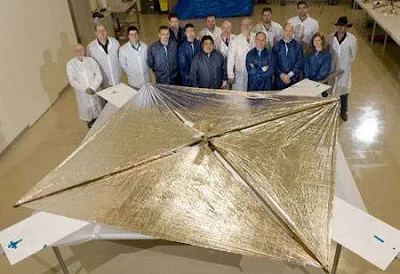 This project has me digging through the boxes, looking for my 2 meter gear. This looks like fun! From AMSAT:
This project has me digging through the boxes, looking for my 2 meter gear. This looks like fun! From AMSAT:ARISSat-1 is a microsat developed as a follow-on to the SuitSat-1 project. The satellite was launched to the ISS on January 28th, 2011, with deployment during an EVA (spacewalk) on February 16, 2011.
The satellite will downlink live SSTV images from four onboard cameras, live telemetry and messages on the CW, FM voice, and BPSK downlinks, as well as provide a 16kHz wide transponder for two-way contacts. All the uplinks and downlinks are based on software defined radio systems.
Telemetry will include spacecraft subsystem information, as well as data from the Kursk State University experiment. This experiment will sample the change in vacuum as the satellite slowly re-enters the atmosphere.
| ||||||||||||||||||||||||||||||||||||||||
And for those of you looking for a bit of competition, there is a tech challenge:
AMSAT-UK has announced a ARISSat-1 reception challenge with a FUN reward. The different categories cover those with or without a FUNcube SDR dongle.
ARISSat-1 is scheduled for deployment from the ISS next Wednesday Feb 16 – it has a composite VHF downlink that will easily fit into the FUNcube Dongle receive spectrum.
The telemetry is 1 kbit BPSK and can, of course, also be received with a normal SSB 2-metre receiver.
The expected signal levels from ARISSat should be similar to those we expect from FUNcube itself (and also eventually from UKube) and the team are keen to discover what will be the minimum and best type of antennas for schools to use with a FCD. Therefore user experience with the ARISSat signals will be very valuable in making this determination.
To encourage everyone to receive ARISSat signals we are offering a FUN reward for listeners!
There are a number of categories for this challenge – they include:
1+ The first FCD user, from each continent, who can post a spectrum recording of the received signal together with evidence of decoding the data using the ARISSat software and of sending it to the ARISSat data warehouse .
2+ The first non-FCD user, from each continent, who can provide evidence of having decoded the signals and of sending it to the ARISSat data warehouse.
3+ The listener, using a FCD or not, who can demonstrate satisfactory reception of the telemetry in the same ways as described above, using the "smallest" possible receive antenna. The actual closing date for this part of the challenge will be announced later.
4+ All other entrants who can demonstrate that they have been having FUN!
Please submit your "entries", including your location, station details (including FCD serial number where applicable), postal address and reports to g0auk@amsat.org
Good luck,
ARISSAT-1
http://www.arissat1.org/
You can join the FUNcube Yahoo Group at
http://groups.yahoo.com/group/FUNcube/
Twitter: http://www.twitter.com/FUNcubeUK
Facebook: http://www.facebook.com/ just lookup FUNcube
FUNcube SDR Dongle
http://www.FUNcubeDongle.com/





































